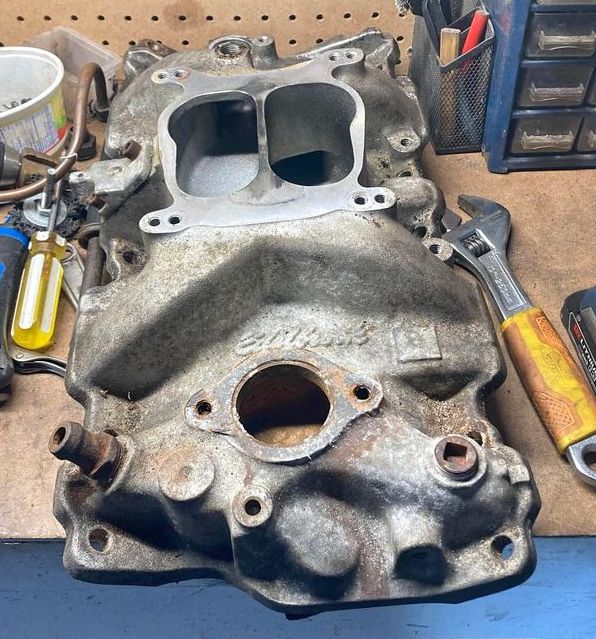
Back up on the Quick Jack hoist – getting lots of use!. I found that on the high setting I can just get the hood open which is great.

Time to overhaul the power steering pump, control valve and piston.

Removal was a bit of a bear. 44 years later and everything is tight. One cotter pin didn’t want to come out so I had to split the castle nut. Fortunately I was able to get at the nut with the small splitter. Four ball joints needed to be opened. One being on the control valve that wouldn’t take the ball joint splitter, but I was able to squeeze in a pitman arm puller and it just came off. Otherwise I would have had to fight with the pitman arm to remove it from the steering box which I really didn’t want to do.

Two afternoons later and it’s all on the bench. The hoses were all toast as most fittings where seized on to the pipes. So they couldn’t be saved.


Nothing beats having the right too for the job. I tied pulling the PS pump pulley off with a small three legged puller (attached onto the pulley center and not the outside of the pulley as they just tend to bend), but that didn’t work at all even with heat from a fax max. Happily my car nut chum happened to have the correct kit. With it I was able to get it off without damage to the pulley or the pump – I can get a $36 core charge refund fjor the old pump if it’s in good shape for rebuilding.

Pulley sand blasted, sanded and ready for paint. I tape the inside to keep the paint off the surface where the belt rides. I have had problems with belts slipping (squealing) when I painted the inside of the groove. I’ll paint with Tremclad rust primer and cheapie-do Princess Auto gloss black – this is a try out of their paint.
Next I will break down the ps components.




















































